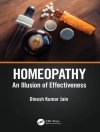In the past two decades, considerable interest in skin cancer has developed in the public and scientific communities. There may have been several reasons for this: – The rise in the global incidence of cutaneous cancers – New molecular biology techniques resulting in a better understanding of pathogenesis and improved diagnostic procedures – The advent of new pathological entities, e. g. , the endemic form of Kaposi’s sarcoma – A constantly increasing range of therapeutic modalities, providing even more efficacious treatment and manage- ment of skin cancers As N. E. Fusenig describes in the first chapter of this volume, basic research is only beginning to unravel the complex mechanism involved in cellular dedifferentiation and tumor progression. Progress is dearly needed, especially in dermato- oncology, where the rise in the incidence of epithelial tumors has inflated the overall skin cancer incidence. The incidence of tumors of the skin exceeds that of all other neoplasias in humans, with recreational sun exposure being a suspected primary cause. Several studies on the effects of UV radiation have been included at the beginning of this volume. Even the role of long wavelength UV (UVA) has become a focus of research activities. The main concern is that the low carcinogenicity of UVA, in comparison to UVB, may be outweighed and exceeded in its effects by increased UV A exposure, e. g.
Claus Garbe & Constantin E. Orfanos
Skin Cancer: Basic Science, Clinical Research and Treatment [PDF ebook]
Skin Cancer: Basic Science, Clinical Research and Treatment [PDF ebook]
Beli ebook ini dan dapatkan 1 lagi PERCUMA!
Bahasa Inggeris ● Format PDF ● ISBN 9783642787713 ● Penyunting Claus Garbe & Constantin E. Orfanos ● Penerbit Springer Berlin Heidelberg ● Diterbitkan 2012 ● Muat turun 3 kali ● Mata wang EUR ● ID 6333296 ● Salin perlindungan Adobe DRM
Memerlukan pembaca ebook yang mampu DRM












